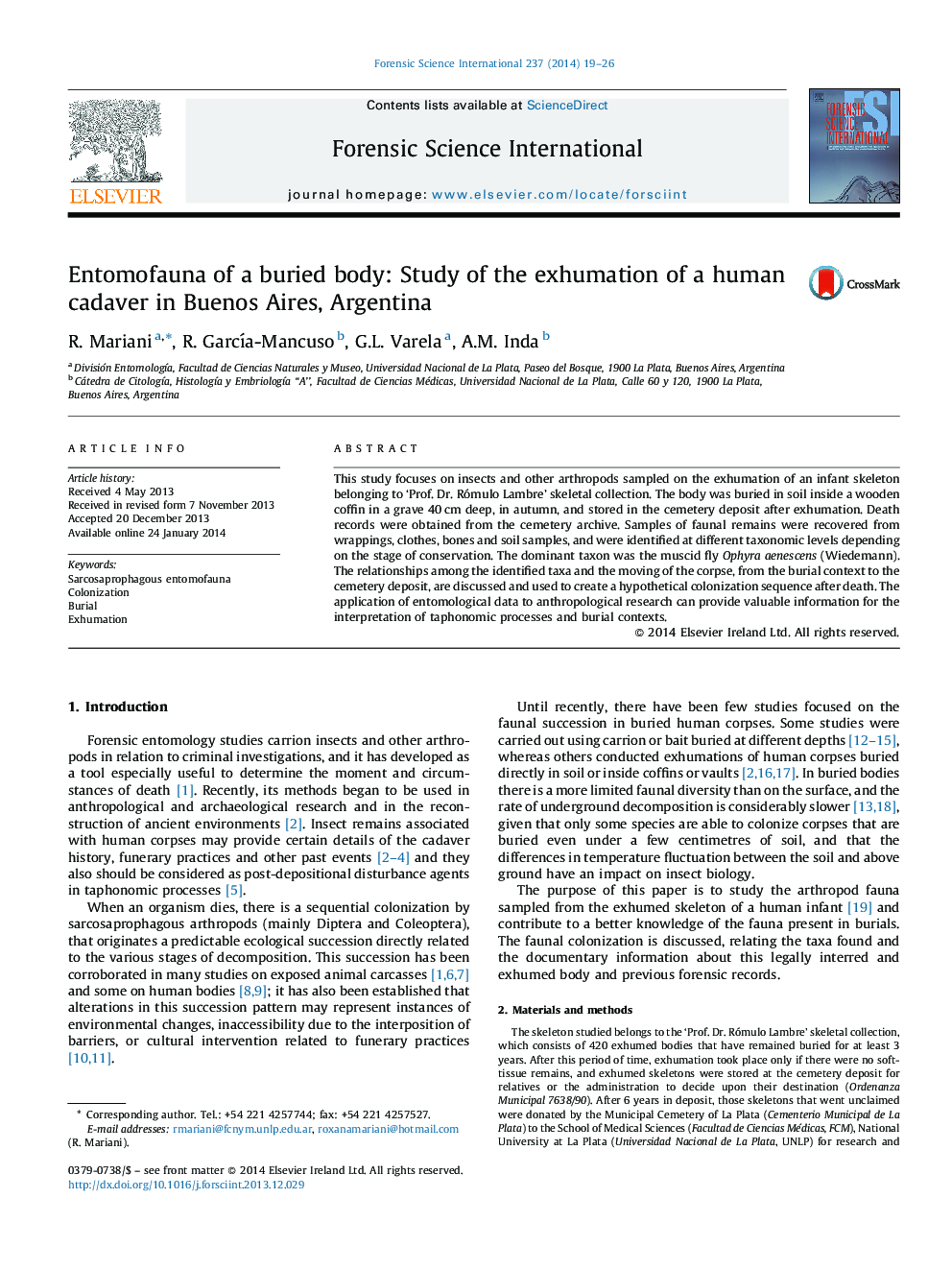| Article ID | Journal | Published Year | Pages | File Type |
|---|---|---|---|---|
| 95779 | Forensic Science International | 2014 | 8 Pages |
This study focuses on insects and other arthropods sampled on the exhumation of an infant skeleton belonging to ‘Prof. Dr. Rómulo Lambre’ skeletal collection. The body was buried in soil inside a wooden coffin in a grave 40 cm deep, in autumn, and stored in the cemetery deposit after exhumation. Death records were obtained from the cemetery archive. Samples of faunal remains were recovered from wrappings, clothes, bones and soil samples, and were identified at different taxonomic levels depending on the stage of conservation. The dominant taxon was the muscid fly Ophyra aenescens (Wiedemann). The relationships among the identified taxa and the moving of the corpse, from the burial context to the cemetery deposit, are discussed and used to create a hypothetical colonization sequence after death. The application of entomological data to anthropological research can provide valuable information for the interpretation of taphonomic processes and burial contexts.
